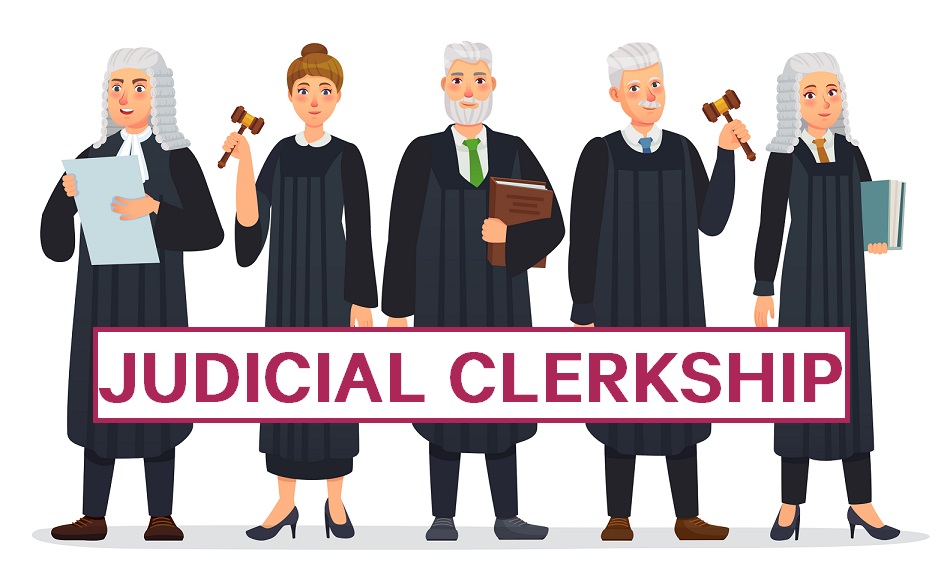See To Clerk or Not to Clerk for more information.

Federal versus State
Federal Clerkships
Generally speaking, clerking with a federal judge will be considered more prestigious than clerking with a state court judge. As such, students at the top law schools are competing more aggressively for federal clerkships than for state judicial clerkships. Given the prestige of a federal clerkship, it can often make you marketable far beyond the geographic area where you are clerking.
The “ranking” does not stop at federal versus state, though. Within both federal and state courts, there is a hierarchy of stature at play. At the federal level, the order of prestige of clerkships is typically 1) the Supreme Court, 2) circuit (appellate) clerkships, 3) federal district court (trial court) clerkships, and 4) clerkships with United States magistrates (who do a great deal of the legwork for federal district court judges). There are also several specialized courts (such as Federal Tax Court) that are of approximately the same prestige level as federal district court clerkships. For obvious reasons, clerking for the Chief Justice of the United States Supreme Court is generally considered the most prestigious clerkship possible. And, similarly, because there are many more people competing for clerkships in larger metropolitan areas, a clerkship with a federal district judge in the Eastern District of New York is more prestigious than a clerkship with a federal district judge in a small town in the Midwest, for example. It follows naturally, then, that attorneys who clerk for the most prestigious judges are typically those for whom clerking increases marketability.
- See Also: Will a Clerkship Enhance My Marketability? for more information.
Most attorneys applying for federal clerkships apply to work either for federal district judges (district court clerkships) or for federal appellate judges. District court clerkships involve actual issues being litigated at the trial court level and normally have more in-court action. In a district court clerkship, you may see many of the same attorneys in court day in and day out. In a circuit court clerkship, you are likely to see the lawyers involved only when they are presenting their appellate arguments in court. The work involved in appellate clerkships is mainly research and writing about issues the trial court has already ruled upon and reviewing the District Court’s errors. In an appellate clerkship, you are less likely to get to know the lawyers involved in the underlying litigation since you will rarely see them.
See Related Articles:
- How Attorneys Can Get a Job During and After a Federal Clerkship
- What Skills Do You Learn in Judicial Clerkships that Help You in Private Practice?
- How Law Students Can Decide Whether or Not They Should Clerk for a Judge: Should You Do a Clerkship or Not?
State Court Clerkships
There are also different distinctions in the state court system. Usually, you have 1) a Supreme Court, 2) appellate courts, and 3) trial courts, with the state Supreme Court clerkship being the most prestigious. Just as certain federal district courts in various geographical locations are considered prestigious places to clerk in, so too are the state courts in various states. In general, if you are clerking for an appellate court in a highly populated state, the clerkship will be considered more prestigious than if you are clerking in a smaller state.
- See Also: 25 Recent Supreme Court Clerks Now Working in Law Firms for more information.
The “problem” with a state court clerkship is also something that is often an advantage. While a state court clerkship will not necessarily increase your chances of being marketable anywhere throughout the United States, it can be immensely helpful in the geographic area where you are clerking. Clerking for a state court can connect you with key local contacts. The fact of the matter is that most litigation (even at the most prestigious law firms) is conducted in state, not federal courts. Accordingly, a state court clerkship will provide you with a better understanding of state law than you would ever get as a federal clerk. If you are planning on working in the area where you are clerking, the state court clerkship should be hugely valuable.
See Related Articles:
- 25 Sample Judicial Clerkship Questions and Answers
- Law Schools That Send the Most Attorneys to United States Supreme Court Clerkships
- How to Get an Attorney Position During and After Your Judicial Clerkship
Conclusion
When considering whether or not to clerk, and where to do so, you need to have a good understanding of where you ultimately want to work post-clerkship. Take a look at where various judges’ former clerks are now to get an idea of what your marketability might be following different clerkships. If a federal clerkship is not in the cards, then consider clerking in the same state where you want to work for the long-term.



